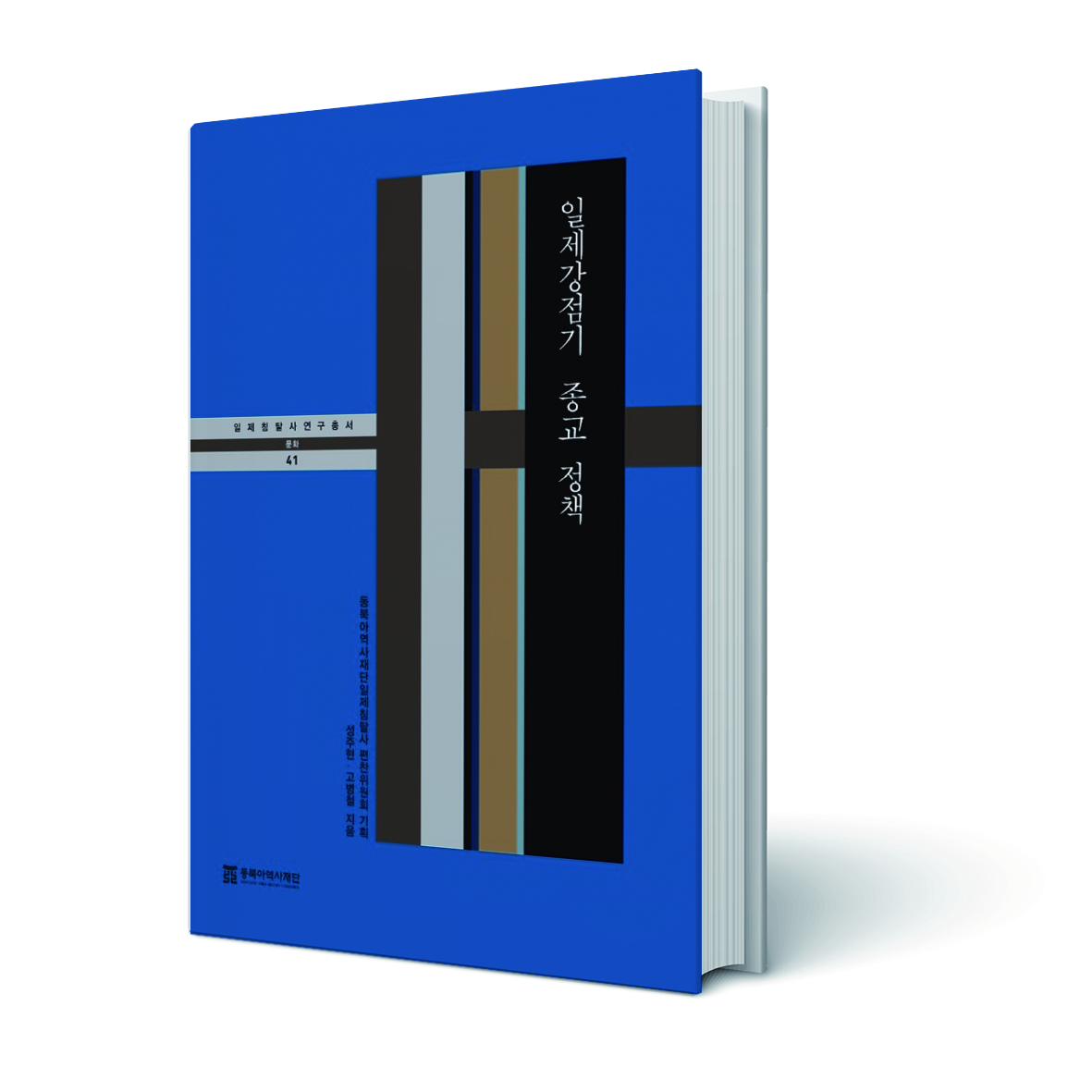동북아역사재단 2022년 11월호 뉴스레터
- Seong Ju-hyeon, vice director of Institute for 1923 Kantou Genocide

The distorted essence of religion
Religion is usually defined as a cultural system where people try to resolve human agony and seek the ultimate meaning of life with relying on supernatural powers of absolute beings. However, religions during Japanese colonial era were kept under the Japanese emperor system. It means the state-oriented religious view where religion is protected only by the regime or its necessity and must be subordinate to the regime.
The concept of religion took root in Japan during the Meiji era (1868–1912). During this process, Japan experienced categorization where the relationships between the gods and human beings were prioritized in the nature of religion and the scope of religion was limited to Sect Shinto, Buddhism, and Christianity. As a result, Buddhism and Sect Shinto were considered as religions and on the other hand other religious groups or folk religions were placed in an ambiguous position. As people began to think that religion exists for the state as an unscientific and personal sector and religion was approved as long as it did not exceed the norms of the Japanese political system, the notion of religion became political and individual religions became positive to nationalism.
The Japanese religious policy had gone through this process as means of establishing the Japanese political emperor system. The Meiji government in Mar. 1872 changed its religious policy that had been prioritizing Shinto, so that all religionists including Shinto, Buddhism, and folk religions could be appointed for magisterial positions. They also installed the Department of Education to conduct the national reformation campaign. It was to cultivate subjects who would conscientiously devote themselves to the prosperity of family nation, Japan. For such goal, they issued the three rules. The problem was that the rules stipulated the objectives that religions had to aim for the emperor system. In other words, a principle was established in which all religions could exist only when they obeyed the domination of the state.
Propagation rules and categorization of religions
The religious awareness of the Japanese colonial era was intactly applied and even expanded after Japan’s forced annexation of Korea in Aug. 1910. Imperial Japan that occupied Joseon by force acknowledged only three religions-Shinto, Christianity, and Buddhism. Other religions which emerged in Joseon became the targets of so-called crackdown. However, it was impossible to crack down since there were too many different types of religions including Cheondoism, Sicheonism, Daejongism, Daedongism, Taegeukism, and Confucian Church. And many of them were difficult to be acknowledged as religion because of their movements did not really differ from politics. To resolve this, Imperial Japan categorized religions into accredited religions and pseudo religions and announced the Rule of Religious Propagation in Aug. 1915.
In accordance with the Rule of Religious Propagation, all religious propagation activities had to be thoroughly supervised and monitored by a governor. They could issue orders of prohibition such as the shutdown of a religious gathering place and reports about propagation had to be submitted. It shows their intention to supervise and control all religious activities through their administrative body which was the Japanese General Government of Korea based upon the Rule of Religious Propagation.
In addition to the Rule of Religious Propagation, Imperial Japan controlled religions of Joseon under a variety of acts and rules including the Rule of Religious Proclamation (1906), the Matters Concerning the Protection of Properties of Regional Buddhist Temples, the Ordinance on Buddhist Temple, the Enforcement Regulation on the Ordinance on Buddhism, the Matters Concerning the Preparation of a List of Buddhist Temple Treasures, the Matters Concerning How to Handle Job Permission for Chief Monk of Buddhist Temple, the Matters Concerning Property Management of Buddhist Temples in Joseon, the Regulation on Shrines and Temples, the Matters Concerning Religious Ceremonies of Private Religious Schools on the Festival Day, the Matters Concerning Religious Book Teachers of Private Schools, the Regulation on Shrines, the Regulation on Temples, the Security Act, the Ordinance on Private Schools, the Ordinance on Assembly Control, the Regulation on Summary Penalty on Crimes, the Implementation Procedure for the Regulation on Summary Penalty on Crimes, the Ordinance on Education in Joseon, and the Rule on Private Schools.
Religious division and mobilization
Imperial Japan properly utilized religious division and mobilization for themselves. Imperial Japan did not only separate religion from politics and education, but also actively involved in dividing religions. In case of traditional Joseon Buddhism, they created the 30 head temples system with pro-Japan Buddhist monks and tried to separate them from anti-Japan Buddhism led by Han Yong-un and Baek Yong-seong. Furthermore, they tried to integrate Joseon Buddhism with Japanese Buddhism Sōtō Zen.
For Christianity, they actively cultivated Joseon missionary-centered Christianity led by Congregational churches in order to separate missionary-centered Western Christianity. Although it failed, it considerably affected colonial Christian activities. During the war footing period, the religion was mobilized for pro-Japan activities of Christianity with regarding to a visit to Japanese shrines.
Imperial Japan abolished Sungkyunkwan and founded Kyeong Academy to break up Confucianism. Based on this, they developed Hwangdo Confucianism following pro-Japan Confucianism. Cheondoism pushed for pro-Japanese activities since the late Joseon dynasty. As a result, it was divided into Cheondoism and Sicheonism. After the March 1st Movement, it was both directly and indirectly involved in forming Samseongmugeukism, Jeuism, etc. in the 1920s. Especially, during the war footing period, Cheondoism cooperated for Imperial Japan’s colonial rule through mobilization.
Colonial religious policies
Imperial Japan actively conducted colonial religious policies. Religious administrative body and the changes thereof and the police responsible for religious crackdown and the changes thereof are worth noting regarding Japanese religious policies. During the period of the Japanese Resident-General of Korea, Imperial Japan installed the Japanese Resident-General of Korea in Gyeongseong and director’s offices in other districts to take care of religious administrative affairs. Police organization also handled religious crackdown. The regional department of the Japanese Resident-General of Korea, the regional office of the director’s office, and the department of administrative affairs of the police took care of religious matters. During the period of the Japanese Governor-General of Korea, the regional department of the regional office of the Ministry of Internal Affairs, the confidential affairs office and high officials of police department of the Ministry of Police Affairs, and the provincial education offices of the Ministry of Internal Affairs handled religious administrative affairs. The system changed depending on organizational restructuring. After the March 1st Movement in 1919, Imperial Japan newly installed the Bureau of Education, Religion, and Social Administration and the Bureau of Security under the Japanese Governor-General of Korea to assign religious administrative affairs. The Bureau of Education, Religion, and Social Administration took care of Shinto, Buddhism, Christianity and the Bureau of Security was responsible for folk religions, so-called pseudo religions.
Japanese religious policies were basically based on their internal religions. During Imperial Japan’s colonial regime after their forced annexation of Joseon, they made more detailed acts for Joseon than their own acts and applied such acts to themselves. In that sense, it is no exaggeration to say that the religious policies during the Japanese colonial era were not just for implementation but were a testing ground for establishing their own religious policies.

동북아역사재단이 창작한 '일제강점기 종교의 그늘' 저작물은 "공공누리" 출처표시-상업적이용금지-변경금지 조건에 따라 이용 할 수 있습니다.



